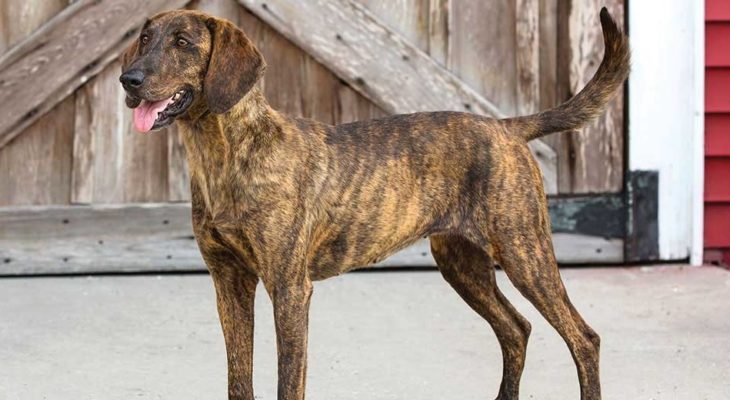Plott Hound
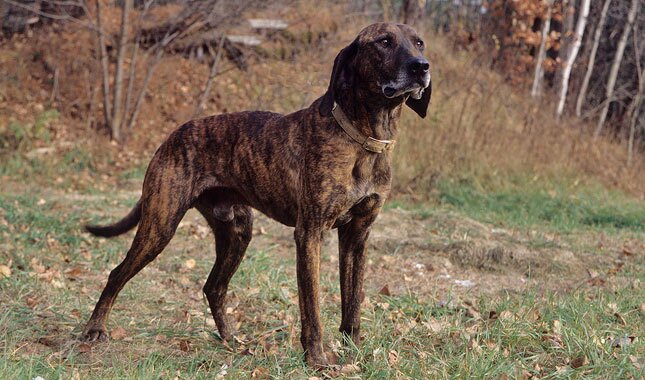
The muscular dog is also endowed with a strong character. It is active, intelligent, and brave. Because of its innate hunting instinct, the Plott Hound is 100% capable of doing anything. The animal performs admirably both in dense forests and in overgrown fields. The dog can hunt in water conditions. But with hunting birds, however, problems may arise. Because of its huge size, the raft hound will not run after a shot bird.
Table of Contents
Breed Information
| Another Name | Plott, Plotthund |
| Origin | United States |
| Height | Males 50-71 cm Females 50-58 cm |
| Weight | 18-27 kg |
| Fur | Short |
| Color | Black, red tiger, blue tiger, brown tiger, black tiger, brown-padded, tiger and others |
| Lifespan | 12-14 years |
| FCI Classification | Breeds outside the FCI classification |
| Group | Hunting dogs |
| Price | From $250 |
Breed Photos
Origin History
The history of the breed began in the 18th century. Representatives were bred in the American state of North Carolina. The dogs were named after the emigrant breeder Plott. The German was engaged in breeding hound dogs. Georg Plott brought five Hanoverian bloodhounds specimens descended from the Bloodhounds to the United States in 1750. They became the ancestors of the Plotts. The breeder set out to create a universal representative of hunting dogs. The animals turned out to be incredibly hardy, agile, with innate excitement and a loud voice.
For many years, the breed was considered the domain of only one family. But soon, the Plott Hounds settled in the southern states. In 1998, the American Kennel Club officially recognized the breed. But from the International Association, the dogs still have not received recognition. Outside of their homeland, Plott Hounds are not particularly popular. But in North Carolina, they are considered a symbol of the state.
Appearance
The breed has an elongated muzzle with a wide forehead. The cheeks are drooping. Large and floppy ears set low. The eyes are large and round. The teeth are sharp and strong. A muscular, straight back with a convex loin. The long tail looks up when excited.
The coat is short, smooth, and soft. Among the colors are all shades of tiger, black, tiger with black saddle, black-pattern, sandy, cream, red, golden, and brown. Graying on the muzzle and white inserts on the chest and paws are officially recognized.
Character
The muscular dog is also endowed with a strong character. It is active, intelligent, and brave. Because of its innate hunting instinct, the Plott Hound is 100% capable of doing anything. The animal performs admirably both in dense forests and in overgrown fields. The dog can hunt in water conditions. But with hunting birds, however, problems may arise. Because of its huge size, the raft hound will not run after a shot bird.
A loud voice distinguishes representatives of the breed. The dog barks only when needed or threatened. The animal works without problems not only on hot tracks but also on cold ones. Excellent sense of smell can track an animal, even if he was lost a couple of days ago. At the same time, the dog gets along well with people. Easily finds contact with children, strangers, and other pets. Shows aggression only in rare cases. Nature does not allow it. Plott Hound quickly becomes attached to the family and the owner.
Care
Comb out the raft with a brush once a week. Wash only when necessary. You can wipe the coat with a damp cloth or wipe. Give your pet a flea and tick preventative once every one to two months. If your pet spends a lot of time in nature, more often. The Plott Hound is not suitable for apartments. In private homes, it can live outside, provided that there is a warm enclosure in case of minus temperatures. The ideal exterior is considered a country house, where there is plenty of space for activities.
Training
The dog needs early socialization. Only in this case, the Plott Hound obeys the owner unconditionally. Easy to train. It is important to provide regular physical activity. To allow the Plott Hound to release energy, walk at least an hour or two a day. It is best to do this safely to let the pet be active without a leash. You can jog together. Make sure, however, that the rapt Hound does not run away because of his innate hunting instinct. His energy is endless, so additional training is not unreasonable.
Common Diseases
In general, the Plott Hound is characterized by good health. Genetic diseases are rare. Because of the breed’s large size, it can suffer from hip dysplasia. Expert breeders provide pictures of the hips before purchase. Therefore, it is impossible to come across a dog with poor hips. Ear infections are often observed. It is important to leave the ears clean and dry. If you see accumulations of wax, debris, or redness, contact your veterinarian right away.
Nutrition
The Plott Hound can be fed premium dry food or a balanced natural diet. Dogs love to eat good food. But it’s important not to overfeed. Obesity is the most common disease in animals, with serious consequences. The dog loves lean meat, porridge, cereals, and vegetables. It is worth introducing two meals a day – in the morning and in the evening. Do not leave food out all day. It is unfavorable for the gastrointestinal tract of the pet.
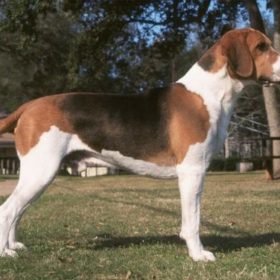 Harrier
Harrier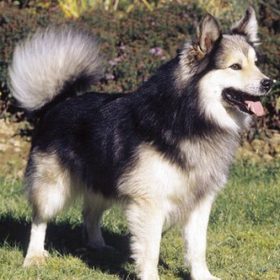 Icelandic Sheepdog
Icelandic Sheepdog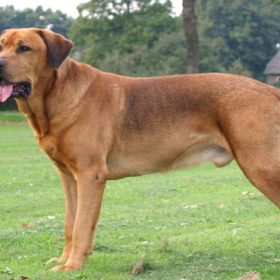 Broholmer
Broholmer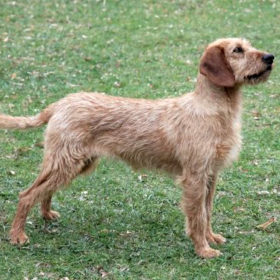 Styrian Coarse-haired Hound
Styrian Coarse-haired Hound Toy Fox Terrier
Toy Fox Terrier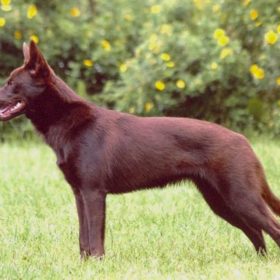 Australian Kelpie
Australian Kelpie

